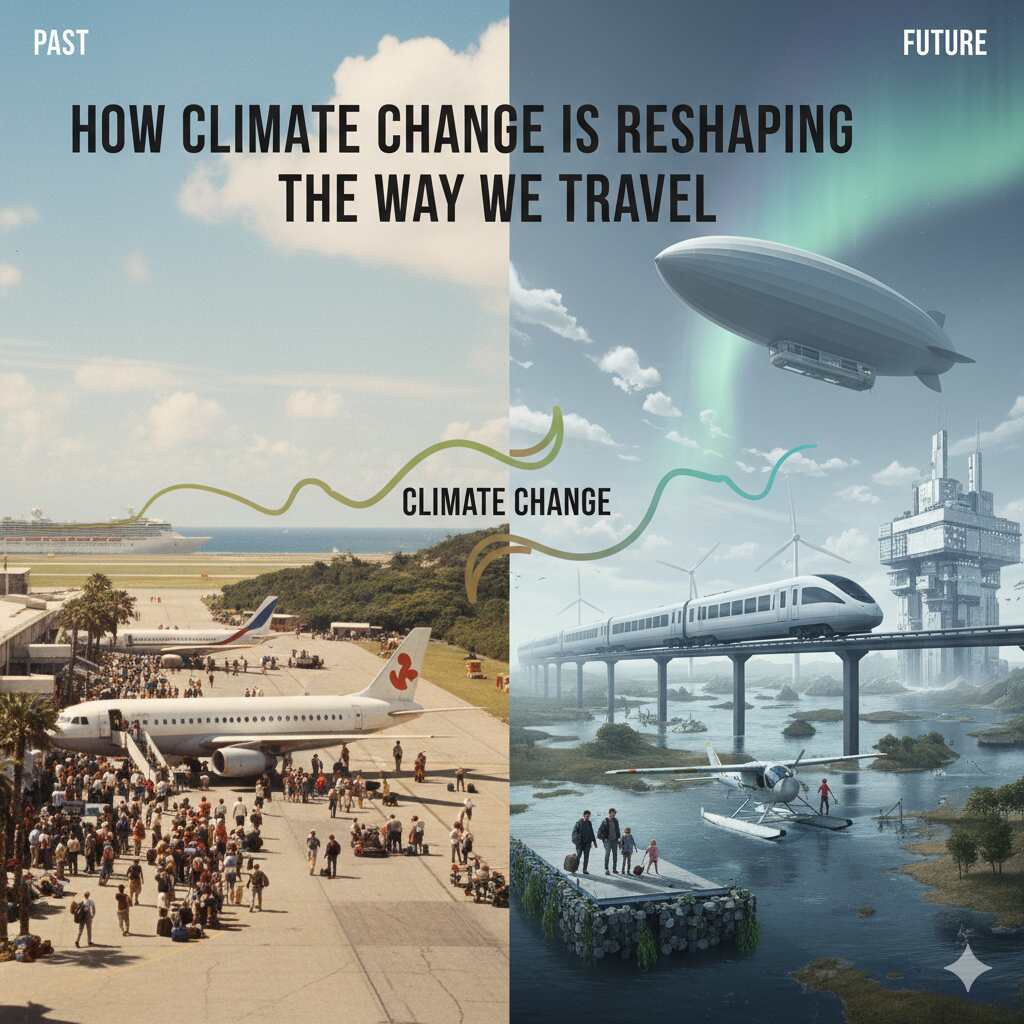The world is changing—and so is the way we explore it. As climate change accelerates, its effects are no longer distant warnings but present-day realities. From flight disruptions to vanishing destinations, the impact of climate change on travel is profound, complex and growing. Whether you’re a casual vacationer or a seasoned globetrotter, understanding these changes is essential for planning future adventures.
The Rising Heat: A Global Wake-Up Call
One of the most immediate effects of climate change is the increase in global temperatures. This isn’t just about hotter summers—it’s about how heat affects every aspect of travel:
- Popular destinations like the Mediterranean, Southeast Asia and the Middle East are experiencing extreme heatwaves, making them less attractive during peak seasons.
- Outdoor activities such as hiking, safaris and beach lounging are becoming riskier due to heatstroke and dehydration.
- Tourism seasons are shifting. Spring and autumn are becoming the new summer for many destinations, altering travel calendars and crowd patterns.
Turbulent Skies: Air Travel Gets Bumpier
Flying is no longer as smooth as it used to be. Studies show that severe air turbulence has increased by over 50% since the 1970s, especially over the North Atlantic. This is due to:
- Jet stream disruptions are caused by uneven warming of the atmosphere.
- Longer flight times and increased fuel consumption lead to higher ticket prices.
- More frequent flight delays and cancellations due to extreme weather like storms, heatwaves and wildfires.
Infrastructure Under Pressure
Our transportation infrastructure—from airports to railways—was built for a different climate. Now, it’s struggling to keep up:
- Rail tracks are warping under extreme heat, causing delays and safety concerns.
- Flooded roads and airports are becoming more common, especially in coastal cities.
- Wildfires near urban areas are disrupting travel routes and forcing evacuations.
Vanishing Destinations: The Loss of Natural Wonders
Some of the world’s most iconic travel spots are under threat:
- Coral reefs, like the Great Barrier Reef, are bleaching and dying due to rising ocean temperatures.
- Glaciers in places like the Alps and Patagonia are melting, altering landscapes and reducing winter tourism.
- Low-lying islands such as the Maldives face existential threats from rising sea levels.
These changes not only affect the environment but also the local economies that depend on tourism.
Health Risks on the Rise
Climate change is also fueling the spread of vector-borne diseases like dengue and chikungunya. Warmer temperatures and increased humidity create ideal breeding grounds for mosquitoes. Travellers now face:
- New health advisories for regions previously considered safe.
- Vaccination requirements and preventive measures add complexity to trip planning.
- Increased insurance costs due to higher health risks.
The Economic Ripple Effect
As travel becomes more unpredictable, costs are rising:
- Airlines are spending more on fuel and maintenance.
- Hotels in vulnerable areas are investing in climate-proofing.
- Travel insurance premiums are increasing due to higher risk.
These costs are often passed on to travellers, making vacations more expensive and less accessible.
Shifting Traveller Behaviour
Travellers are adapting in response to these changes:
- Eco-tourism is on the rise, with more people seeking sustainable travel options.
- Staycations and local travel are gaining popularity as alternatives to long-haul flights.
- Flexible booking policies and travel insurance are now must-haves.
What Can Travellers Do?
While the challenges are real, there are ways to travel responsibly:
- Choose destinations that prioritise sustainability.
- Offset your carbon footprint by supporting reforestation or clean energy projects.
- Travel during shoulder seasons to avoid peak heat and crowds.
- Support local businesses that are adapting to climate challenges.
Frequently Asked Questions (FAQ)
Q1: How does climate change affect flight safety?
A: It increases turbulence and weather-related delays, making flights less predictable and sometimes more dangerous.
Q2: Are specific destinations becoming too hot to visit?
A: Yes. Regions like the Middle East and parts of Southern Europe are experiencing extreme heat, reducing their appeal during summer.
Q3: Can climate change affect my travel insurance?
A: Absolutely. More frequent natural disasters and health risks are leading to higher premiums and stricter policies.
Q4: What are the health risks of travelling in a warming world?
A: Diseases like chikungunya and dengue are spreading to new areas due to warmer climates.
Q5: How can I travel more sustainably?
A: Opt for eco-friendly accommodations, reduce air travel when possible and support local conservation efforts.
Final Thoughts
The impact of climate change on travel is no longer a distant concern—it’s a present-day reality. From rising costs to vanishing destinations, the way we explore the world is being reshaped. But with awareness and action, we can adapt and continue to experience the beauty of our planet—responsibly.

